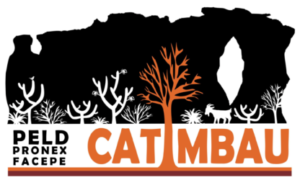23. Chaves et al 2020 – Hunters’ preferences and perceptions as hunting predictors in a semiarid ecosystem. Science of the Total Environment
22. Barbier et al 2020 – Ecology of Antricola ticks in a bat cave in north-eastern Brazil. Experimental and Applied Acarology
21. Melo et al 2020 – Adding forests to the water–energy–food nexus. Nature Sustainability
20. Albuquerque-Lima et al 2020 – An explosion of perfume: Mass flowering and sphingophily in the Caatinga dry region in Brazil. Plant Species Biology
19. Rocha et al 2020 – Reproductive biology of columnar cacti: are bats the only protagonists in the pollination of Pilosocereus, a typical chiropterophilous genus? Folia Geobot
18. Domingos-Melo et al 2020 – The dark side of the rain: self-pollination setbacks due to water exposure in Pavonia varians Moric (Malvaceae), a species with rain-dependent flowering.Acta Botanica Brasilica
17. Barbosa et al 2020 – Reproductive biology of Syagrus coronata (Arecaceae): sex-biased insect visitation and the unusual case of scent emission by peduncular bracts. Plant Biology
16. Oliveira et al 2020 – An endemic lizard of Catimbau National Park, Pernambuco, Brazil, as prey of Tropidurus cocorobensis (Squamata, Tropiduridae). Herpetology Notes
15. Carvalho et al 2020 – Ants as providers of ecosystem services in Caatinga: How to inform society about ecological research. Journal of Environmental Analysis and Progress
14. Oliveira et al 2020 – Plant protection services mediated by extrafloral nectaries decline with aridity but are not influenced by chronic anthropogenic disturbance in Brazilian Caatinga. Journal of Ecology
13. Menezes et al 2020 – Introduced goats reduce the diversity and biomass of herbs in Caatinga dry forest. Land Degradation & Development
12. Gonçalves et al 2020 – The palm Syagrus coronata proliferates and structures vascular epiphyte assemblages in a human-modified landscape of the Caatinga. Journal of Tropical Ecology
11. Alves et al 2020 – Landscape-scale patterns and drivers of novel mammal communities in a human-modified protected area. Landscape Ecol
10. Andrade et al 2020 – Rainfall reduction increases insect herbivory in tropical herb communities. Journal of Vegetation Science
9. Trindade et al 2020 – Water availability mediates functional shifts across ontogenetic stages in a regenerating seasonally dry tropical forest. Journal of Vegetation Science
8. Knoechelmann et al 2020 – Leaf-cutting ants negatively impact the regeneration of the Caatinga dry forest across abandoned pastures. Biotropica
7. Pereira et al 2020 – Intense mycorrhizal root colonization in a human-modified landscape of the Caatinga dry forest. Forest Ecology and Management
6. Silva et al 2020 – Land use, soil properties and climate variables influence the nematode communities in the Caatinga dry forest. Applied Soil Ecology
5. Szyja et al 2020 – Neglected but Potent Dry Forest Players: Ecological Role and Ecosystem Service Provision of Biological Soil Crusts in the Human-Modified Caatinga. Frontiers in Ecology and Evolution
4. Silva et al 2020 – Divergent responses of plant reproductive strategies to chronic anthropogenic disturbance and aridity in the Caatinga dry forest. Science of the Total Environment.
3. Maia et al 2020 – Species diversity of Glomeromycota in Brazilian biomes. Sydowia
2. Passos et al 2020 – Arbuscular Mycorrhizal Fungal Community Structure in the Rhizosphere of Three Plant Species of Crystalline and Sedimentary Areas in the Brazilian Dry Forest. Microbial Ecology.

